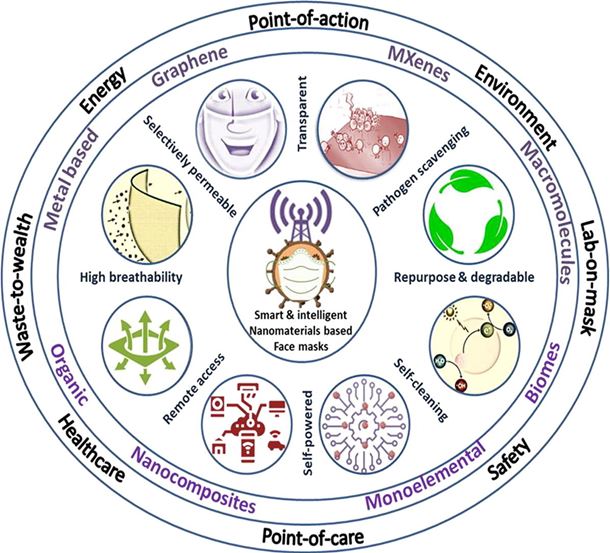Abstract
Face masks have been used as the most effective and economically viable preventive tool, which also creates a sense of social solidarity in collectively combatting the airborne health hazards. In spite of enormous research literature, massive production, and a competitive market, the use of modern age face masks-respirators (FMR) is restricted for specific purposes or during public health emergencies. It is attributed to lack of awareness, prominent myths, architect and manufacturing limitations, health concerns, and probable solid waste management. However, enormous efforts have been dedicated to address these issues through using modern age materials and textiles such as nanomaterials during mask fabrication. Conventional FMRs possess bottlenecks of breathing issues, skin problems, single use, fungal infections, communication barrier for differently abled, inefficiency to filter minute contaminants, sourcing secondary contamination and issue of solid-waste management upon usage. Contrary, FMR engineered with functional nanomaterials owing to the high specific surface area, unique physicochemical properties, and enriched surface chemistries address these challenges due to smart features like self-cleaning ability, biocompatibility, transparency, multiple usages, anti-contaminant, good breathability, excellent filtration capacity, and pathogen detecting and scavenging capabilities. This review highlights the state-of-the-art smart FMR engineered with different dimensional nanomaterials and nanocomposites to combat airborne health hazards, especially due to infectious outbreaks and air contamination. Besides, the myths and facts about smart FMR, associated challenges, potential sustainable solutions, and prospects for “point-of-action” intelligent operation of smart FMRs with the integration of internet-of-nano-things, 5G wireless communications, and artificial intelligence are discussed.

See full text for more information.
Read full text on ScienceDirect
DOI: 10.1016/j.mattod.2022.08.019
Share this journal article